Engineering Practices Workshop: The Use of Networks in the Humanities and Social Sciences
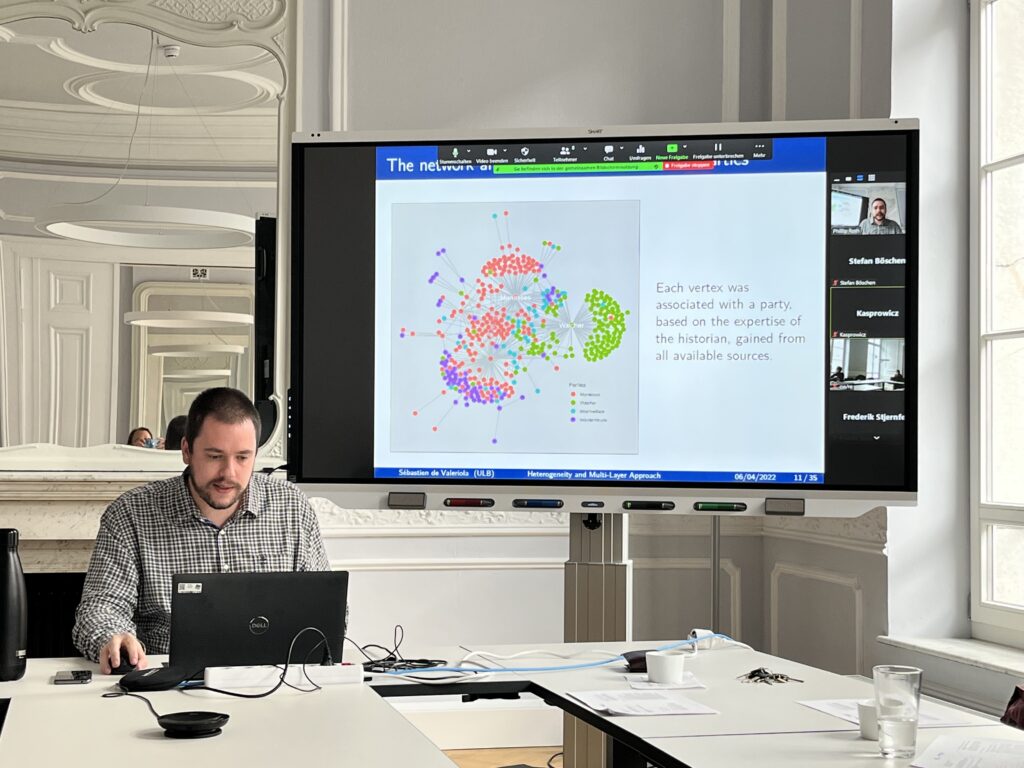
Middle Ages: A Multi-Layer Network Approach”
On May 30th – June 1st, c:o/re hosted the workshop The Use of Networks in the Humanities and Social Sciences, part of the Engineering Practices series and organized by Professor Ana Bazzan together with Phillip H. Roth and Alin Olteanu.
The aim of the workshop was to chart the use of networks in the humanities and social sciences and the consequences of the use of such epistemic tools for the way we understand science, society and the world. As such, the event gathered a variety of perspectives on networks and applications of network analysis, from the mathematics of networks to media analysis, historical research and to tackling questions on technology.
A point of convergence among these varied approaches is that, as models, networks have become a central epistemological tool in many sciences as well as vernacularly, not least because of the mainstreaming of social media and their role in networking communities and academic disciplines across previously established boundaries. A particularly interesting takeaway point of this workshop is that, as models and as representations, networks have become a common analytical tool in many fields of research, thus allowing for multi-perspective discussions on methodology.
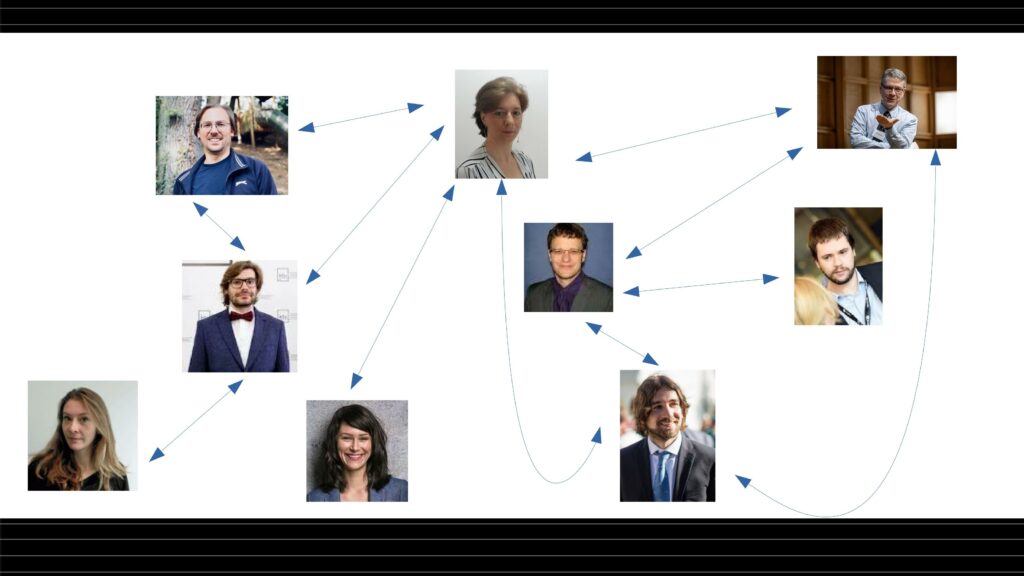
Review of Amanda Boetzkes’ Plastic Capitalism (2019) – “Art in the petrotimes”
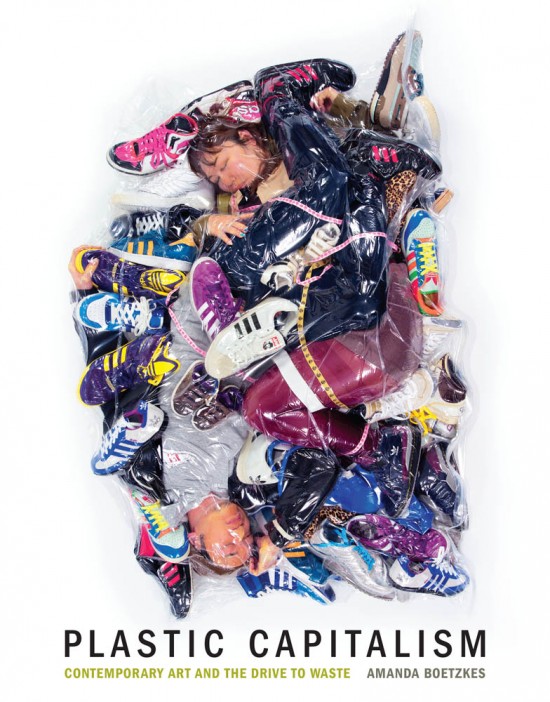
Sara Bédard-Goulet published a thorough and insightful review of c:o/re fellow Amanda Boetkes‘ (2019) Plastic Capitalism Contemporary Art and the Drive to Waste in the journal Social Semiotics. The review, titled Art in the Petrotimes: An aesthetics of waste, is here.
Book launch: The world’s first full press freedom
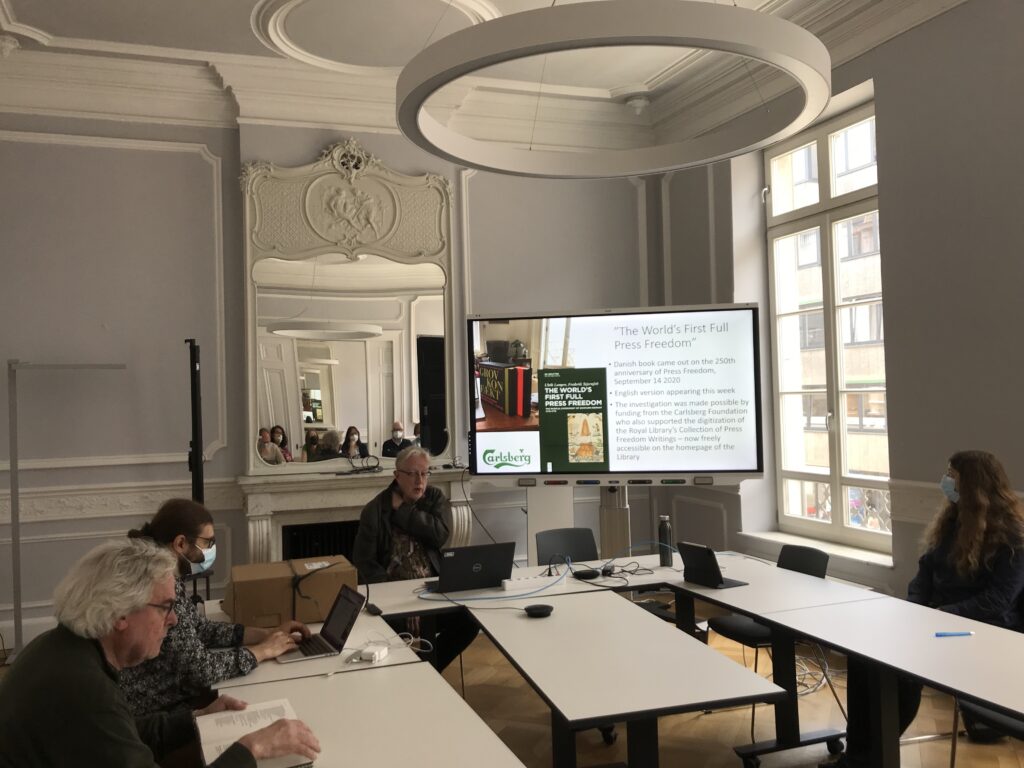
We had a book launch at c:o/re, as Ulrik Langen and Frederik Stjernfelt‘s book The World’s First Full Press Freedom: The Radical Experiment of Denmark-Norway 1770-1773 is being published this week. Frederik Stjernfelt gave a thorough presentation of the book on 25.05.2022. This was a particularly appropriate date for a discussion on press freedom as, on the same day, in Aachen, there took place the ceremony of conferring the International Charlemagne Prize to the leading Belarusian political activists Maria Kalesnikava, Sviatlana Tsikhanouskaya and Veronica Tsepkalo, who lead the fight for democracy in Belarus.
This is an adaptation for international audiences of their previous book written in Danish, also together with Henrik Horstbøll, comprising two volumes, Grov Konfækt. Tre vilde år med trykkefrihed, 1770-73. To address an international audience, Ulrik Lange and Frederik Stjernfelt both reduced the size of the initial text and, also, approached some new topics, to do with the international reactions to the episode of the history of Denmark-Norway (The Oldenburg Monarchy) that the book discusses.
The book offers a historical investigation of the interesting episode in the history of Denmark-Norway when Press Freedom was introduced by the German Radical Enlightener J.F. Struensee, who was hired in 1768 to take care of the mental health of King Christian VII. Struensee became the King’s favourite and achieved political power, backed also by a small group of reform-oriented top officers. This allowed Struensee, for a brief 16-months period, to effectively be dictator of Denmark-Norway and, as such, to introduce close to 2000 pieces of new legislation, many of them with Radical Enlightenment inspirations.
In this context, the book zooms in on the implications of and reactions to the law of 14 September 1770 that stated that censorship is abolished in order to facilitate the ”Impartial Investigation of Truth”, to go against ”Fallacies and Prejudices of earlier Times”, and to ”attack Abuse and reveal Prejudices”. This was an Enlightenment ideal. Struensee could not have foreseen, probably, the many types of social implications of absolute press freedom. He was, eventually, ousted and executed by coup-makers in the middle of the Press Freedom period.
Showing simultaneously how press freedom is crucial for democracy and human rights and how it is also dangerous, the exploration of this historically first case of full press freedom is highly relevant for contemporary debates on freedom of expression online and post-truth attitudes. The detailed investigation that the book offers relies on an impressive categorisation of about 1000 pamphlets published during this press freedom period.
As the first book on the matter, in Danish, covers in great detail the events in Denmark-Norway of this historical episode, the new English adaptation also compares the Copenhagen pamphlet storm of 1770 with the pamphlet storms that took place in Vienna in 1781 and in Paris in 1788.
The authors explain that, in all three cases, Enlighteners introducing Press Freedom were disappointed with the result. The population hardly became more moral and enlightened, but rather used freedom to split into warring factions, to print and buy cheap entertainment, libel and obscenities. Also, in all three cases, an immediate explosion of prints waned over a number of years, finally to be restricted again by different means, such as post-print censorship, prohibition of anonymity, signal cases, taxation, licensing requirements, among others. However, very importantly, all three cases made clear the modern consequences of Press Freedom as it would spread in Western democratic constitutions through the 19th Century.
The book draws many relevant conclusions on freedom of speech in general. As particularly relevant for contemporary issues, the book argues that press freedom is not natural, nor automatic. There is always a pretext to curtail it, and every government may find reasons to do so.
Press freedom is unpredictable and cna involve many types of of drawbacks, such as libel, threats, calls for sedition, fake news. To this day, (full) press freedom is contested: there is no agreement about its limits. Press freedom creates a public sphere, drawing people to consider political options and to conceive themselves as political subjects.
Summarising, the book highlights the importance of accepting conflict as part and parcel of the democratic process and the pursuit of human rights. Press freedom is instrumental in this regard, as it connects to a conflictual view of society: there are and always will be different social strata, different political positions, different interest groups, different power centers and their conflict is better waged in the open.
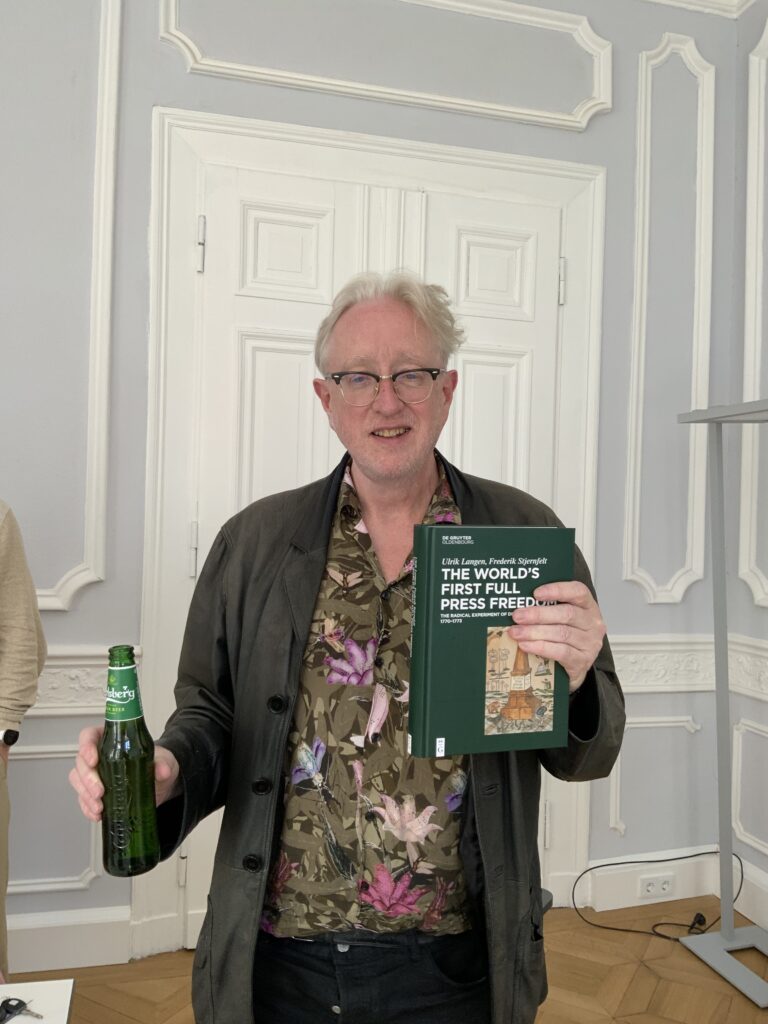
Getting the Measure of Humanity: or, Taking ‘Life is a Work of Art’ Literally
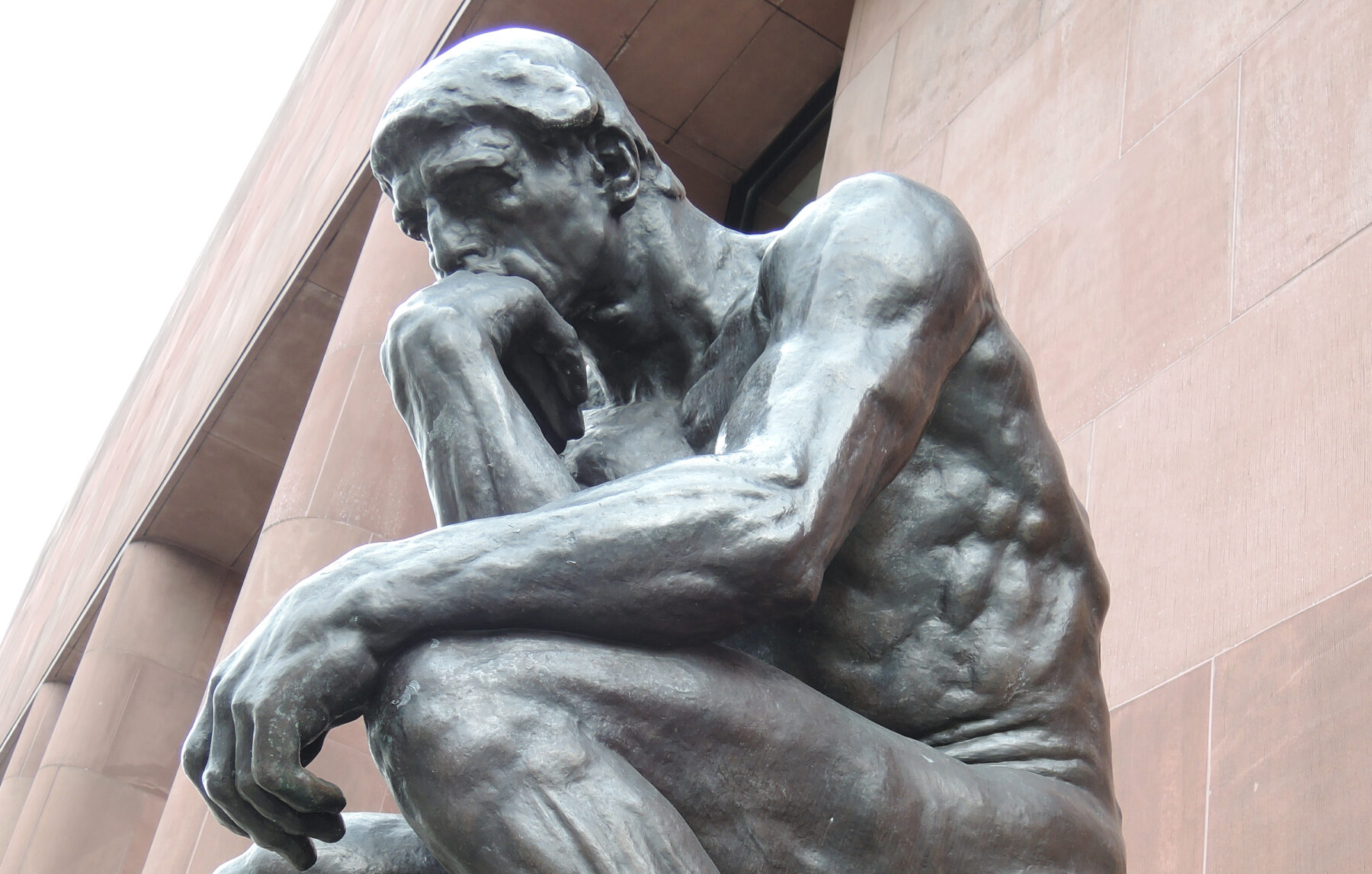
STEVE FULLER
What it means to be ‘human’ and whether the human must be the measure of all minds inevitably returns us to Kant. Kant himself was drawn to the concept of ‘judgement’, which he interpreted in terms of the then-emerging science of ‘aesthetics’. Aesthetics positioned the human as a being called to integrate diverse and often contradictory sensory inputs into a coherent whole in the name of ‘autonomy’, which is in turn exercised through judgement, which of course is also informed by reason. What modern philosophy calls ‘epistemology’ and ‘ethics’ reflects Kant’s view that human judgement forms two rather different but coexistent wholes as part of its ‘worldview’, another term from the aesthetic lexicon. The trajectory out of Kant to the German idealists, Schopenhauer and Nietzsche was largely about trying to achieve a higher, more synthetic aesthetic vision of the world, which typically involved what Nietzsche called a ‘transvaluation’ of the way we see the world from either a strictly epistemological or ethical standpoint.
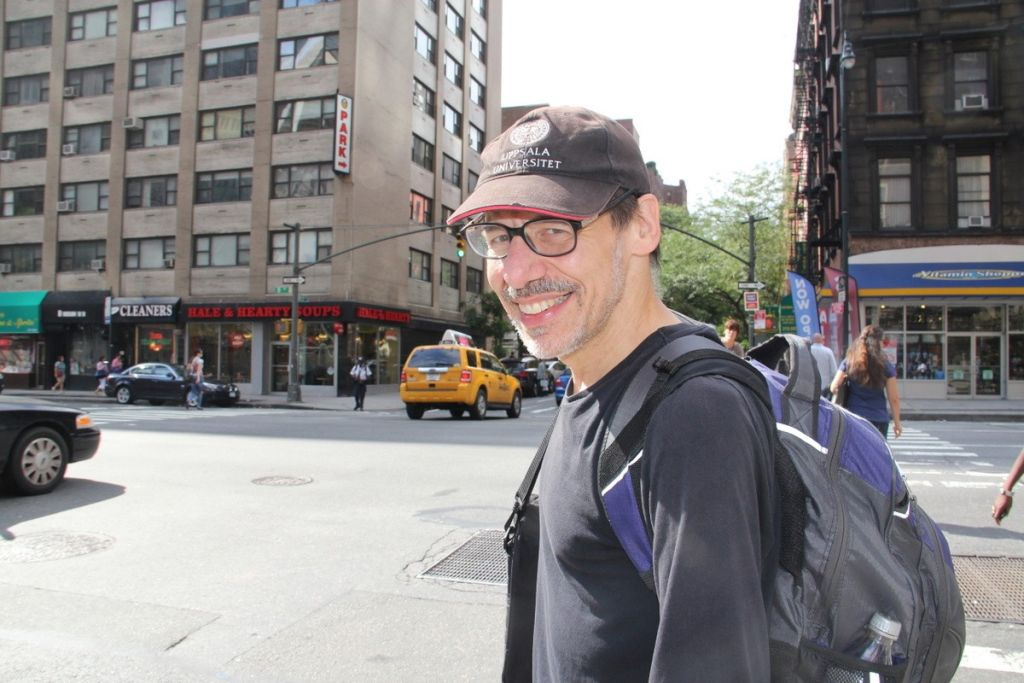
Steve Fuller
Senior Fellow at c:o/re (10/21-09/22)
Steve holds the Auguste Comte Chair in Social Epistemology in the Department of Sociology at the University of Warwick, England. This article is an opening statement for the 18-19 May workshop on ‘The Human Measure and the Measure of All Minds’.
Nietzsche’s somewhat ironic conclusion, already intimated in Kant, is that such a transvaluation would supplant the human with some other kind of being, which we nowadays might call ‘transhuman’ or ‘posthuman’. In effect, the sense of ‘judgement’ that defines the human for Nietzsche is not focused externally on the ultimate cosmic order but internally on the endless, perhaps even Sisyphean task of managing – if not reconciling – what we know and what we want. In this respect, Nietzsche continues to secularize Kant’s original theologically inspired vision of humans as fallen creatures. From this standpoint, the act of passing judgement on another’s humanity – as in the Turing Test – poses a challenge. It is outward looking but it treats the larger world – or more precisely, a candidate alien being – as a canvas on which to project the human; yet the human remains itself a bundle of contradictions, not a template that can simply be imposed.
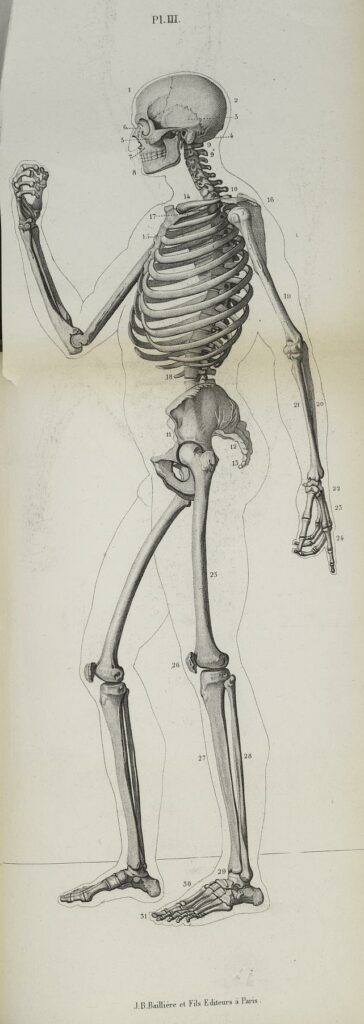
Recent aesthetic theory offers an interesting angle on this dilemma. Nelson Goodman famously proposed that art may be divided into those works that can be forged (because they constitute a unique completed object) and those that cannot be forged (because they can be completed in many ways). He had in mind the distinction between a painting or sculpture, on the one hand, and a musical score or dramatic script, on the other. Against this intuition, Arthur Danto proposed imagining that two artists generate paintings that appear the same to the observer but one used Rembrandt’s method and the other Jackson Pollock’s. Goodman might claim that subtle differences between the two paintings could always be found, based on which one painting might be judged superior and the other perhaps a forgery. However, Danto argues that Goodman’s judgement would probably be based on suspecting that the two paintings had been produced at different times and by different means. For Danto, if you like one, you should like the other. If anything, knowing that they were produced differently should enhance not detract from your aesthetic experience. The Pollock might even be valued more, given the prior improbability of its result.
Danto’s point was designed to undermine the idea of forgery. For him, unlike Goodman, an aesthetic judgement involves treating not only the future but also the past of a candidate work ‘performatively’. Just as we potentially learn something new about music or drama with each new performance, the same applies to our unlearning ideas about the ‘unique craftsmanship’ of a painting or sculpture upon realizing that it can be (and could have been) brought about differently. This sense of temporal symmetry dissolves Goodman’s original distinction. Of course, aesthetic judgement then gets more squarely placed on the shoulders of the judge – and in that sense, becomes more ‘subjective’. Indeed, Danto’s championing of Andy Warhol’s Brillo Box as art led many critics to claim that Danto dissolves the concept of art altogether.
Now applying Danto to Turing, does entertaining a comparably free — ‘morphologically free’, if you will — conception of the human undermine the very concept of humanity? Nietzsche believed that it might but remained agnostic about the consequences – and he was thinking only about how Homo sapiens might be transformed in the future. But why could we not also, á la Danto, discover ‘humans’ who never were Homo sapiens? Moreover, a practical question is attached to the idea of a morphologically free ‘human’. Is a more open conception of what passes as human sustainable in a world with finite resources in many different senses? Kant’s ideal of ‘cosmopolitanism’ suggested an indefinitely expanding circle of humanity, which he associated with collective self-improvement through sustained interaction with ‘alien’ others. Without denying the attractiveness of this ideal, its realizability remains an empirically open question, as non-stereotypically candidate ‘humans’ come forward for recognition.
Reference
Danto, A. (1974). ‘The Transfiguration of the Commonplace’. The Journal of Aesthetics and Art Criticism 33(2): 139-148.
Featured Image: Le Penseur by Rodin, CC BY SA.
Proposed citation: Fuller, Steve. 2022. Getting the Measure of Humanity: Or, Taking ‘Life is a Work of Art’ Literally, https://khk.rwth-aachen.de/2022/05/10/3243/3243/
Knowledge as capacity to act: takeaway from Professor Nico Stehr’s visit at c:o/re
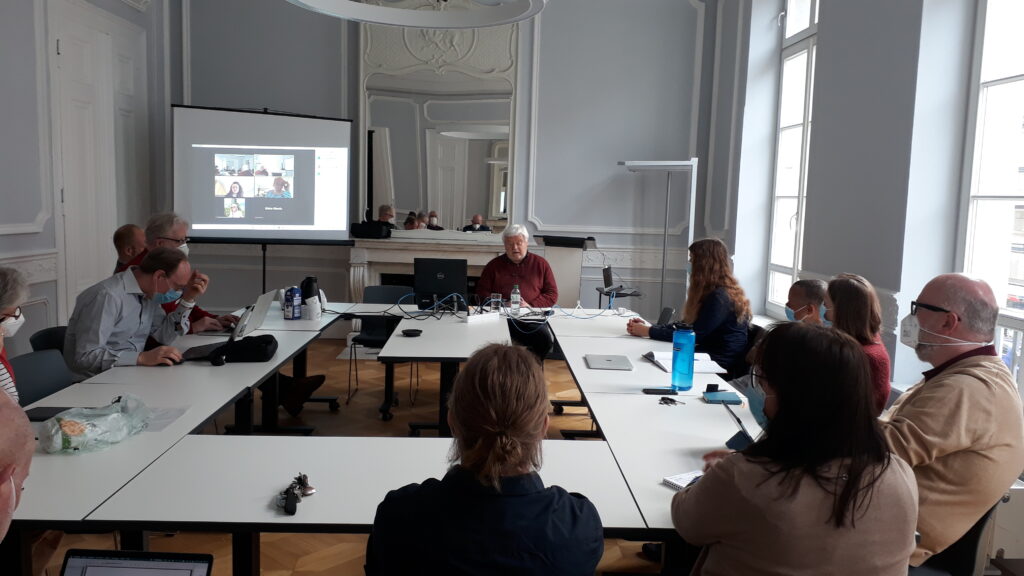
We are grateful for Professor Nico Stehr‘s visit at c:or/e during April 2022. It was a pleasure and most interesting to have with us a pioneer of the “knowledge society”, who has been at the forefront of research on culture, society and sustainability for many decades and, as such, is a defining figure for this disciplinary intersection. In an excellent talk titled “Competition among forms of knowledge or the limits of the power of scientific knowledge”, Professor Nico Stehr introduced the breadth and depth of his notion of knowledge as capacity for action. By construing knowledge as model both of and for reality, Nico Stehr offered a timely reflection on the relation between representation, interpretation and factuality. Surely, his work will remain essential to STS, as well as to other akin areas of research.
Very kindly, Professor Nico Stehr donated some of his books to our library. This collection of books is a glimpse of his scholarly legacy.
Interdisciplinary Research in Robotics and AI
Joffrey Becker and c:o/re RWTH Aachen University are hosting this workshop on April 20th 2022
Interdisciplinary Research in Robotics and AI
This workshop addresses interaction design by focusing on the notion of Behavioral Objects. Based on robotics and artificial intelligence, these non-anthropomorphic, non-zoomorphic objects are endowed with capacities for expressive movement, actions and reactions and are also able to elicit observers’ behavioral interpretations (intentional and emotional attributions). They are therefore of interest to many fields of research like social sciences, humanities, robotics, computer sciences, art and design. The workshop will address the interdisciplinary framework opened by Behavioral Objects and the experimental perspective that brings together and combines these disciplines.
To take part online, please register with events[at]khk.rwth-aachen.de
Program
12:00-02:00pm
The Apprentices: Objects with Interacting Behaviours
Samuel Bianchini (Reflective Interaction Research Group/EndsadLab, École nationale supérieure des Arts Décoratifs, PSL University), Elena Tosi Brandi (Xdlab/Art Directions Nods, Orange), Hugo Scurto (Inserm-Sorbonne Université and ISIR, CNRS Sorbonne-Université and Reflective Interaction Research Group)
The Appprentices is a design research project led by multidisciplinary teams from Orange Innovation and EnsadLab (the laboratory of the École des Arts Décoratifs, Paris). Following an experimental approach that combines human sciences (notably anthropology and cognitive sciences), robotics and computer sciences (machine learning) with digital creation and innovation, this project explores new relational modalities between humans and our robotic environments enhanced by artificial intelligence techniques. If our everyday objects might be empowered with abilities of movement and learning, action and reaction, and a behavioral dimension, how can we design new relationships with these robotic artefacts but also between them? This lunch talk will describe The Appprentices, an instrumental “dispositif” to experiment with such “behavioral objects”, focusing on an original dimension that allows movement and sound to be strongly paired: vibration, vibratory space as a system of communication and interaction. Specifically, the talk will detail the participatory design process that enabled practitioners and researchers from diverse disciplines to collaborate in the prototyping of the dispositif, in an attempt to entangle technical components of these robotic objects with concepts of agency, animacy, learning, and vibration.
Lunch
05:00 – 07:00pm
Behavioral Objects, Agonistic Objects. How and why to design art robotic objects fighting against and for their being conditions?
Samuel Bianchini (Reflective Interaction Research Group/EndsadLab, École nationale supérieure des Arts décoratifs, PSL University)
Created in an artistic context that also belongs to the wider field of robotics, “behavioral objects” are defined by their capacity to express a “personality” thanks to the quality of their movements and their actions and reactions, which are, in this case, regarded as “behaviors.” Non-figurative, these art objects have no need of being useful – their activity does not have a specific function or usage – and they have built-in energy sources that are, generally, not visible, making it impossible to attribute to a third party the energy directly required to make them move, the physical cause of their activity. If their expressive capacities can be provided through the ability to move and interact dynamically with the environment, what kind of interaction could we design to stimulate the attribution of behaviors and even personality? How to build an emotional and reflective relation with this robotics object through an aesthetic dimension in operation? Based on the presentation of several art projects developed in the framework of our Behavioral Objects research and creation project, we propose to consider the design of this objects through an agonistic approach. Even in operation, these objects are still in construction: in a kind of new homeostatic perspective, they are always seeking for their balance. They need to fight for that, against and for their being conditions. Exhibited such objects it is to exhibit this fight. It requires now to configure relations of forces, internal as with the environment. This new kind of settings as to consider aesthetic, symbolic and technical dimensions gathered in real-time operation. It raises the possibility of an agonistic design, a way to set conditions for a sensitive and reflective experience for objects and humans.
Dinner
Enlightenment Now
Steve Fuller, Frederik Stjernfelt and c:o/re are hosting this one-day workshop April 21st 2022
Enlightenment Now
In this seminar, we’d like to draw a line between recent intense research into the intellectual history of the Enlightenment and our present situation. What would Radical Enlightenment mean today? How would a 17-18th century Enlightenment view on our present predicament look like? – given pressing issues of academia today, the fate of the universities, the development of AI, tech, the new West-East cold war, populism, globalization, post/trans humanism, the future of humanity?
To attend online please register with events[at]khk.rwth-aachen.de
Program
10:00-11:00
Free Speech and Enlightenment: Lessons from the World’s First Full Press Freedom
Frederik Stjernfelt (RWTH Aachen/ University of Aalborg Copenhagen)
Abstract
September 14 1770, full press freedom was suddenly declared in Denmark-Norway by king Christian VII and his German favorite, the radical enlightener doctor J.F. Struensee. That signaled the beginning of the dramatic three-year Press Freedom period, effectively kickstarting modern debate in the double kingdom. In the middle of the period, there was a coup, Struensee was decapitated after a mock trial, and Press Freedom was slowly smothered. What can be learned from this strange event of the High Enlightenment?
11:00-12:00
Condorcet’s Predicament- can the democratic republic work?
Jonathan Israel (Institute of Advanced Study, Princeton)
Abstract
Those late Enlightenment figures such as Condorcet, Destutt de Tracy, Paine, Palmer and Barlow and others who had reason to feel profound disappointment and pessimism at the defeat of their plans during the 1790s and opening years of the nineteenth century, apparently nevertheless refused to give up hope of eventual success. But they could hardly avoid a lot of soul-searching and especially asking themselves what are the minimum requirements needed to ensure the stability, viability and survival of a modern democracy. Significantly, all of these tended to see the solution in restructuring, in fact revolutionizing education.
12:00 – 12:15
Coffee Break
12:15-13:15
In Favor of Patterns: Reviving an Enlightenment Ideal
Rens Bod (University of Amsterdam)
Abstract
There are two opposing traditions in the longue durée history of the humanities: one which searches for patterns and regularities (in texts, languages, art, music and the past) and one which rejects any notion of pattern and focuses on the unique and the exceptional. This opposition is found already in 250 BCE between the Analogist school of Alexandria and the Anomalist school of Pergamon and has not disappeared ever since. And yet, there have been periods when the search for patterns, regularities and underlying principles was dominant. The golden period of pattern-seeking was the Enlightenment: patterns were discerned in history by Vico, Condorcet and others, patterns were found in music to build musical grammars by Rameau and Koch among others, and principles were found to underlie languages (De Laet, Hemsterhuis), art (Bellori, Winckelmann) and literature (Boileau, Gottsched), not to speak about the search for patterns and principles in the natural world that has become dominant ever since. Very few of the Enlightenment patterns found in the cultural world have stood the test of time though, but the endeavor to try to understand the world by patterns and underlying principles remains a major feat of the Enlightenment. The opposition between patterns and the exceptional flared up again in the 19th century and arrived at a zenith after WWII with the advent of the Frankfurt School and the postmodern turn. And yet the search for patterns has recently shown a revival in the humanities with the appearance of new disciplines such as digital history, comparative global humanities, environmental humanities and digital humanities. I will show that the return to pattern-searching has also influenced the more traditional humanities disciplines, from philology to art history, and has resulted in a myriad of new discoveries in art, music, literature and history. I will argue that the revival of the Enlightenment ideal of pattern seeking may arguably be the only way for the humanities to survive.
13:15-15:00
Lunch Break
15:00-16:00
Kant Between Swedenborg and Linnaeus: A Fork in the Road to the Enlightenment’s Legacy
Steve Fuller (c:o/re RWTH Aachen/ University of Warwick)
Abstract
I am currently writing a play about a possible but fictional event that would have Kant travel from Königsberg to visit Carolus Linnaeus and Emanuel Swedenborg, who made their reputations in Uppsala. The lives of the three significantly overlapped in time, and Kant was significantly influenced by the two Swedes – to be sure, more positively by Linnaeus than by Swedenborg. However, the three never met. Even Linnaeus and Swedenborg are known to have only met once, namely, when Linnaeus turned over his Stockholm flat to Swedenborg in 1741. Nevertheless, the fictional encounter is significant for marking a fork in the road of the Enlightenment’s legacy, which becomes clearer in the later, ‘critical’ phase of Kant’s career, on which his own reputation as the foundational figure of modern philosophy is based.
My play takes place in 1756, the year after the famous Lisbon earthquake that inspired Voltaire to write Candide and provoked a wide-ranging discussion of theodicy across Europe, epitomized by the question: Do we live in a just world? In that year, Kant was 32, Linnaeus 49 and Swedenborg 68 – each belonging to a different generation. For Kant, Linnaeus was someone who understood the empirical limitations of the ape-like nature of the human condition better than Swedenborg, even though Swedenborg’s more adventurous speculations about the powers of the human mind were often based on a remarkably prescient understanding of the brain’s workings. Kant’s first book, Dreams of a Spirit-Seer (1766) was a comprehensive takedown of Swedenborg, which anticipated his later scepticism about ‘pure reason’.
The play is very much a work in progress, and I plan to discuss the various considerations that the two Swedes might try to bring to bear on Kant, who himself reaches a kind of divided judgement on the matter, which is reflected in his later strong distinction between ‘pure’ and ‘practical’ reason, which effectively has noumenon do double duty in the epistemological and ethical realms.
16:00 – 16:15
Coffee Break
16:15-17:15
The Enlightenment Now: The Human Skeuomorph://Public-Private
Cheryce von Xylander (Leuphana University Lüneburg)
Respondent: Steve Fuller (c:o/re RWTH Aachen/ University of Warwick)
Abstract
This talk about the deep, taken for granted legacy of the Enlightenment, is based on the technological capabilities that were unleashed and largely celebrated in the eighteenth century. Social platforms have migrated discursively from purveyor of a utopian future that would unite users in egalitarian online activity to public enemy that threatens to wreck the democratic cultural order. This trajectory from paragon to pariah has much to teach us about human self-fashioning in the advanced capitalist, neoliberal dreamscape. It should give pause that a service sector that arose from the defence arsenal of the military-industrial complex ever inspired blind faith in its potential to better the human condition. An epistemic prosthetic as powerful as the vast knowledge repository that is the internet will rework cognition. The online industry is forever aggregating digital traces of enacted rationality. This smart techno-habitat systematically conceals what it emphatically re-enacts, namely figuration of the modern user as an aesthetic contrivance conjured in the eighteenth century. I propose to call this enabling latency the human skeuomorph. Skeuomorphism is a concept used by archaeologists to describe aesthetic attributes that outlast their utility in tool evolution. Like other tools in the archaeological record, the human skeuomorph has been subject to material transformations, yet persists as a semiotic undercurrent. The retooling of this apparition in new media will hinge on future interpretations of its Enlightenment past.
17:15 – 17:45
Closing Discussion
Drôles d’Objets: A New Art of Making
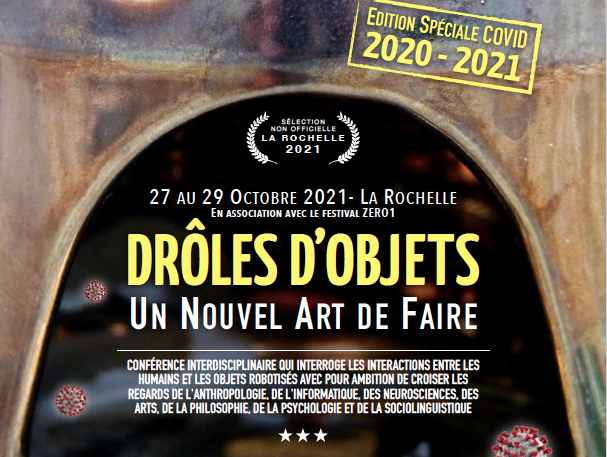
JOFFREY BECKER
Robots, autonomous artifacts, connected objects: how can we design and understand these strange objects that renew our interactions with others and the world around us? We are more and more often invited to enter into a relationship with robots or machines, whether for practical (therapeutic, professional, scientific) or playful purposes. This type of relationship is rapidly developing beyond simple functional use, automatic or mechanical action, towards a type of interaction that involves our effort to interpret the behavior of these objects. Why and how are we tempted to interact with unusual objects that ‘come to life’, move and evolve? The study of these objects interests a wide range of fields in science, art and design. I can mention, among others, robotics, AI, art and design, anthropology, psychology, philosophy, language sciences: each field develops its own notions, methods and tools, often in multidisciplinary contexts. What answers can the philosopher bring to the roboticist’s questions? How can psychology feed on the work of anthropology? Can artists contribute to the sociolinguistics of human-machine interactions?

Joffrey Becker
Junior Fellow at c:o/re (10/2021-09/2022)
Joffrey is a Social Anthropologist and Research Associate of the the Laboratoire d‘Anthropologie Sociale at the Collège de France, Paris. He co-organized the conference “Drôles d’Objets” in autumn 2021.
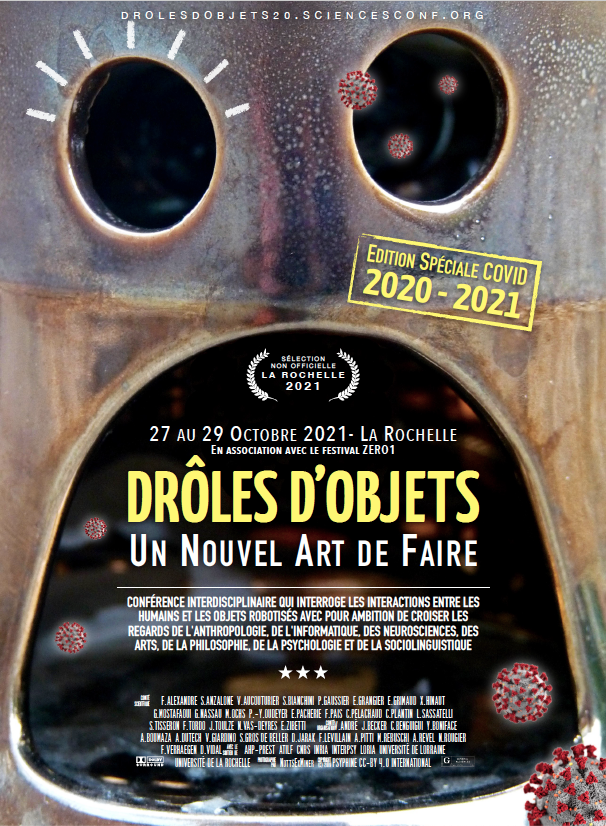
In order to interface views in art, design and scientific practices on both these objects and the interactions they cause, the Psyphine research group joined forces with partners from the University of Lorraine, La Rochelle University and the Zero1 Festival for an interdisciplinary conference called “Drôles d’Objets” held during October 27th – 29th, 2021 in the harbour of La Rochelle.[1]The proceedings of the conference can be found here. In French, the adjective “drôle” covers a wide range of meanings and can be translated as amusing, entertaining, silly, creepy, surprising, funny, interesting, unusual, thought provoking, etc. The term refers to a complexity of issues which characterizes these curious objects as well as the various ways researchers, artists and designers address them.
The conference gathered more than 35 participants coming from various fields of research, such as computer sciences, robotics, art, design, psychology, management, philosophy, anthropology, linguistics. Organized around four main panels, the conference also devoted an afternoon to showcases, workshops and posters with Antoine Desjardin, Giancarlo Rizza, Dominique Deuff, Marion Voillot, Arnaud Blanchard, Romina Romay, Yann Boniface or Xavier Hinaut. The work of artists in residence Agustín Ramos Anzorena and Fabien Zocco (with his project Spider and I) were also presented during an evening session.
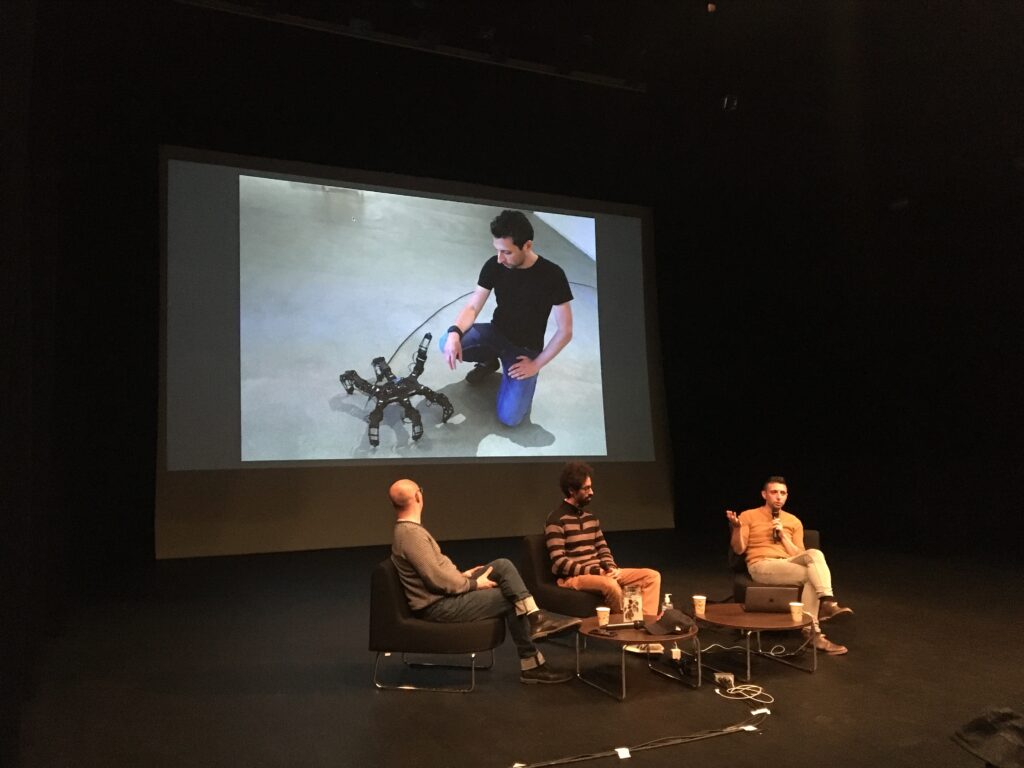
Starting with a session dedicated to conception practices, the conference first addressed questions related to the methods, tools and know-how associated with the design of interactive objects. How do we design an interactive animated object? What are the parameters, characteristics and properties we can play with so that an animated object becomes a “partner”? What are the tools, knowledge and technologies that can be mobilized? The first panel, coordinated by Nicolas Rougier, offered inputs on the diversity of approaches regarding not only the design of objects but also the tools and the methods employed to address conceptualizing from various disciplines. The session featured contributions from Jeanne Lallement and Juliette Passebois on service robots in commercial types of interaction, Mariela Yeregui on her research and creation project “États d’alerte” (State of alert), which illustrates the otherness of machines as a potential threat, Ghiles Mostafaoui on natural and intuitive interaction design in robotics and computer science, and Sylvain Raynal on the autonomy of the subject in his relation to industrial machinism and freedom.
The conference also addressed questions on the observation and the interpretation of results. How can we design an experiment? How can we understand what is happening during an interaction with an animated object? What can we measure, evaluate, and observe? What do we learn from these experiences? How to interpret data from experiments with animated objects? Can we trust the testimony of the subjects? Coordinated by Valeria Giardino, this second panel gathered contributions from Guillaume Nassau, who asked whether a robot is perceived as an interactant or as an object for discussion, and Manuel Rebuschi, who explored questions associated to mental projections and animism using Kendall Walton’s theory of fiction.
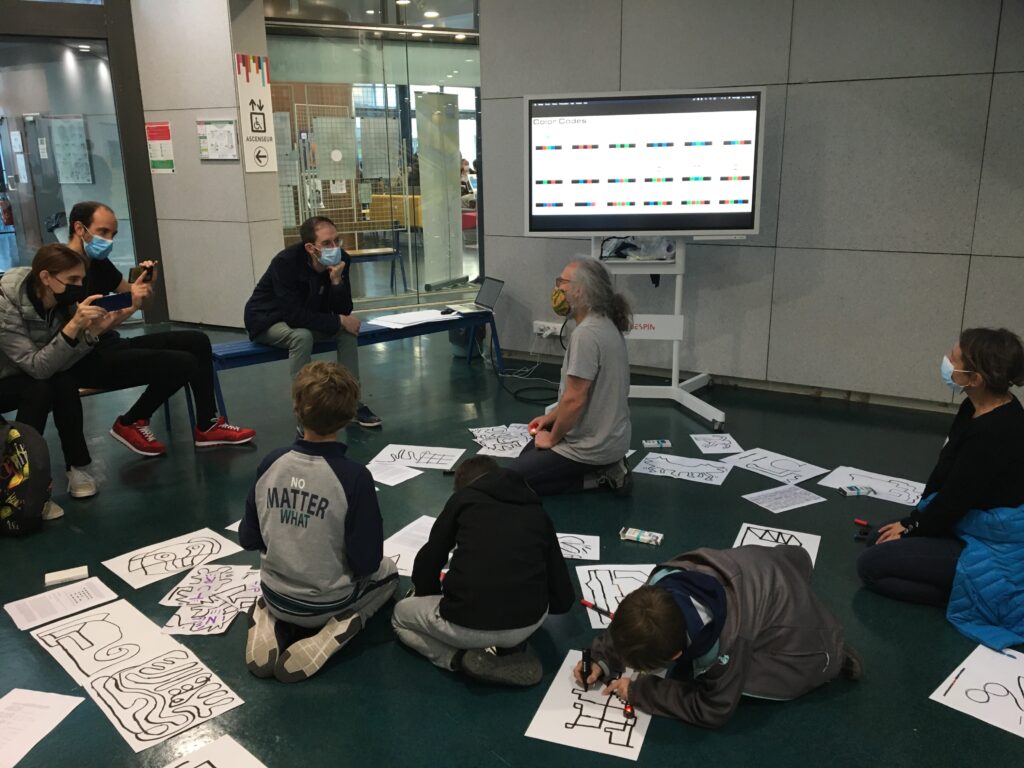
I had the pleasure to coordinate the third session, focused on health- and care-related issues. Robotics and computer sciences have entered this field in various ways. A number of projects are, for instance, concerned with the cohabitation of humans and robots. Some aim at replacing humans in work situations. Robots are also used as a new sort of mediation tool for caregivers. However, their therapeutic contribution remains difficult to establish. With contributions from Jean-Pierre Merlet on the conception and the experimentation of assistive robotic objects, Gloria Michiels on the ethnography of humanoid robots in care spaces, Olivier Duris and Charlotte Labossière on the use of robots regarding children suffering from autistic spectrum disorders, and Quentin Dumoulin on the role that fabrication laboratories could play in pedopsychiatry, the panel addressed questions raised by robots and artificial intelligent-based objects. Are they useful tools or rather gadgets? What is their role? Is their aesthetic appearance important? Do they replace the work of caregivers or are they rather a new tool in the therapeutic process?
Finally, the last session coordinated by Virgine André addressed experiences conducted on telepresence, interactive systems and virtual reality. Gathering researchers mainly working in the field of language and education sciences, the panel explored the effects of telepresence oriented technologies on social interaction. Maud Ciekanski and Virginie Privas-Breauté presented the results of a comparative study of immersive technologies for language learning. Jean-François Grassin showed how telepresence robots modify attention processes during a meeting. Joséphine Rémon, Christelle Combe and Amélie Bouquain, presented an experimentation on telepresence robots conducted within the project “présence numérique” (digital presence). Caroline Vincent, Christine Develotte, Mabrouka El Hachani and Justine Lascar addressed the methodology for studying interactions in mixed groups using telepresence robots.
The conference concluded with an intervention by anthropologist Denis Vidal and neuroscientist Frédéric Alexandre who aimed to put into perspective the work conducted during the week for a larger audience. The recording of their intervention, which is in French, can be viewed on the website of the University of Lorraine:
This interdisciplinary conference showed the necessity of crossing the viewpoints of different disciplines when it comes to the design of interactive robotic systems. It showed that despite the differences, only a transversal approach involving engineering sciences, humanities and social sciences, artists and users can address the major issues that these “drôles d’objets” pose to our societies.
proposed citation: Joffrey Becker. 2022. Drôles d’Objets: A New Art of Making. https://khk.rwth-aachen.de/2022/03/11/2415/2415/.
Farewell and Welcome!
Professor Alexandre Hocquet has now completed his c:o/re senior fellowship. We are grateful to Alexandre for the nice times in Aachen and for his invaluable contributions to our Research Centre. We look forward to continue our joint ongoing projects together! As a glimpse into his work at c:o/re, you can Steal this Blog Post!
We are now excited to be welcoming some new-coming fellows at c:ore: Welcome Professor Nicko Stehr, Professor Markus Rautzenberg and Dr. Fernando Pasquini-Santos!
Lecture Series
As we are about to start the summer term with our new Lecture Series, “Philosophy of AI – Optimist and Pessimist Views“, you can now also listen to some of the talks of the previous series on the “Digitalization of Research”. The recordings can be found in our archive.
Joffrey Becker talks about human-machine interactions and social changes associated to the design of intelligent systems. Markus Pantsar takes a complexity perspective on human-like numerical cognition in Artificial Intelligence and Alexandre Hocquet portrays the possibilities, limits, and consequences of the concept of “openness” in science and research.



